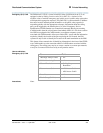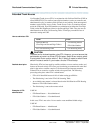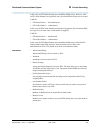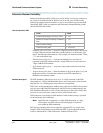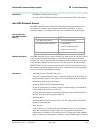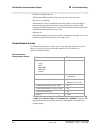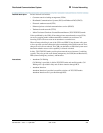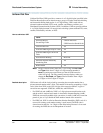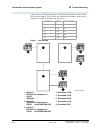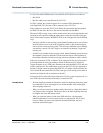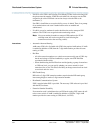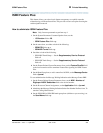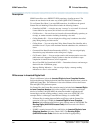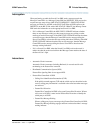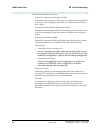
Distributed Communications System
351
Administration for Network Connectivity
555-233-504 — Issue 1 — April 2000 CID: 77730
B Private Networking
UDP conversion is specified for individual extensions or groups of extensions sharing
the same leading digits, via the UDP form and extension codes. An extension code is
the desired leading digits of an extension followed by an “x” (wildcard). For example,
“123xx” “12345”is the extension code for all 100 possible extensions beginning with
“123” plus two wild cards. “12345” is an extension code specifying one extension.
Each extension code can be assigned to 1 of 6 possible treatments.
• UDPCode — Conversion to AAR with given location code, further conversion
suppressed
• AARCode — Conversion to AAR with given location code, further conversion
allowed
• ENPCode — Conversion to private network number (via ENP form), route to
given node number routing
• TempOOS — Temporarily out of service, give reorder
• Local — Local range of extensions
• blank — Similar to local, however, this extension is not chosen when the system is
asked to “add a station”
When a user at a switch that is included in a UDP dials an extension, DEFINITY ECS
first checks to see if the extension is assigned to a local station on that switch. If so,
the call is routed to the station, and UDP is not invoked. If the extension is not found
locally, the system checks to see if the extension matches an assigned extension code.
If the extension matches an assigned extension code, the system performs the
specified conversion into a private network number and routes the call as specified. If
more than one extension code matches, the “best” match (most explicit digits) is used.
For example, 1234x is chosen over 123xx if 12345 is dialed. However, 123xx is
chosen if 12355 is dialed. If no matching extension code is found, the user receives
intercept treatment. Or, if Extended Trunk Access (ETA) is enabled, the call routes
via ETA.
Example of how UDP
works
To administer, assign each UDP code:
• To a private network location code (RNX) or node number. (The RNX is
equivalent to an office code of a central office in a public network. This RNX
determines how a UDP call is routed.)
• Assign each UDP code as either local or remote to the switch.
To understand the function of a UDP, review the following example.



